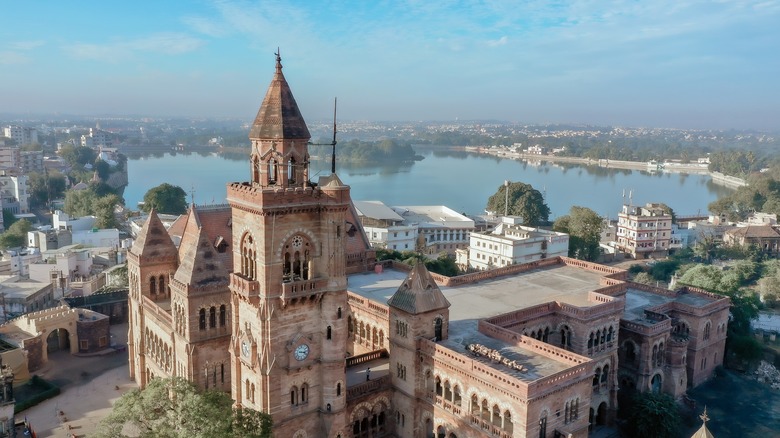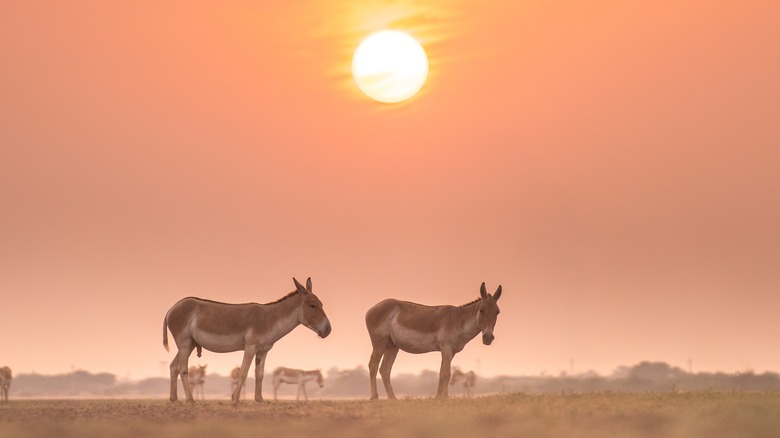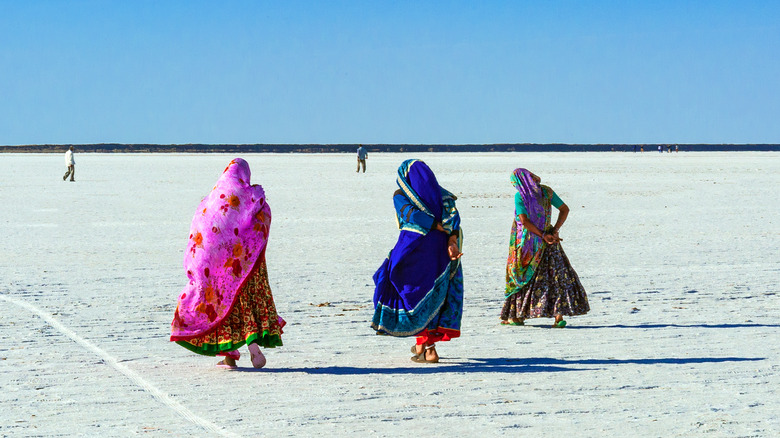Visit This Indian District For Unique Cultural Sites And Dazzling Natural Wonders
While it has long been a beacon for travelers, India is still home to several of Asia's most underrated tourist destinations. The Kutch (or Kachchh) district encompasses an area of over 17,000 square miles, making it the largest in the country, and its location on the Gulf of Kutch grants it a unique blend of coastal beauty and stunning inland landscapes that alternate between wet and dry, depending on the season. The region's mild weather between October and February (with average temperatures in the mid-70s and 80s) is a delight for winter-weary travelers and is host to a myriad of cultural experiences and nature-based activities.
A trip to the Kutch district often begins with a stay in its capital, the historic city of Bhuj. In the walled Old City, travelers can marvel at a few of South Asia's impressive architectural gems such as the Rani Mahal, Aina Mahal, and Prag Mahal, whose intricately carved facades and elaborate interiors hint at the opulence of bygone eras. Wandering through Bhuj's bazaars and markets gives visitors an interesting glimpse into the city's bustling commercial side, while trips to Bhujodi Village and other outlying towns provide opportunities to learn about traditional handicrafts such as weaving, tie dye, pottery, and more, which are central aspects of the region's rich cultural heritage.
Kutch is full of amazing wildlife and spectacular landscapes
While Bhuj is indeed a captivating city, the allure of Kutch is strongest in its rural areas. Nature enthusiasts will appreciate the region's wildlife preserves, such as the Kutch Desert Wildlife Sanctuary, which is home to masses of pink flamingoes. Also present here are rare mammals like chinkara, nilgai (both species of antelope), hyena, caracal, and many endemic and migratory birds. For more exotic animal sightings in Kutch, head to the Wild Ass Sanctuary to see the endangered Indian wild ass, which is much more beautiful and endearing than its name would suggest.
The crown jewel of the Kutch district, though, is definitely the Rann of Kutch: a 7,000-square-mile area of salt marshes that metamorphosizes into a snowy white desert during winter. The salt desert shines brightly in the sun and glows eerily in the moonlight, making it a fascinating place for a jeep tour any time of day. Or, if you prefer a more traditional means of transportation, you can go by camel. For an amazing panoramic view of the Rann, take a bus or tour from Bhuj to the summit of Kalo Dungar, the highest point in the Kutch. Here, you'll also find the ancient Dattatreya Temple, a place of worship for three different Hindu gods: Brahma, Vishnu, and Maheshwar.
The vibrant culture of the Kutch dstrict
Another amazing experience not to miss in the Kutch district is dipping your toe (or maybe even your whole leg) into its rich culture. One way to do this is to attend events like the Rann Utsav festival, which takes place from November through February in the Rann. The festival celebrates Kutch culture and traditions through dance, music, and other live performances and also showcases local handicrafts. For a full immersion in the Rann, festival attendees can stay overnight in tent villages and partake in activities from meditation and yoga to camel cart rides and ATV excursions (less traditional but might be fun for some).
The most direct way to reach the Kutch district is to catch a direct flight from Mumbai, which takes one or two hours. You can also take an overnight train from Mumbai to the capital city of Bhuj, which takes about 15 hours. Another option is to go by bus, and while the roads are decent, the trip would be long and more uncomfortable if you want to sleep. From Bhuj, travelers can arrange tours or transportation to the other places mentioned in this article. Just a reminder that when traveling to India or any other developing country, be aware of health risks and take proper precautions so that illness or injury doesn't put a damper on your adventures.


